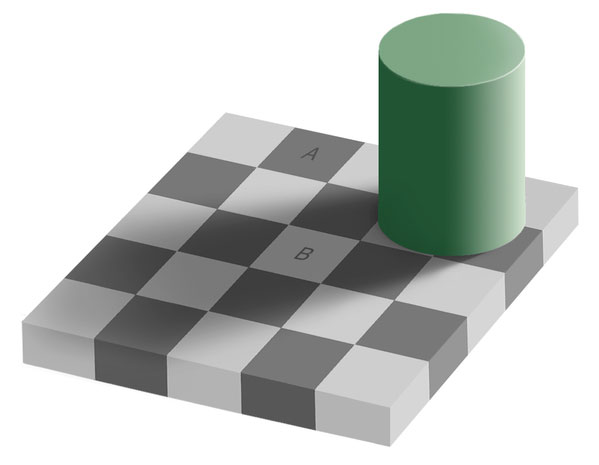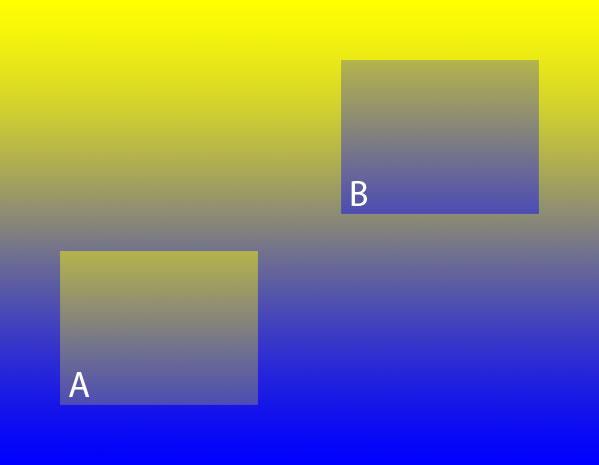Debriefing
The preceding examples all demonstrated that top-down processing affects colour perception. Even if you knew that the examples were illusions, chances are you still perceived the differences in colour (which did not really exist). Click hereto see the illusion revealed.
For each example, click "Show me" to see the illusion revealed.
Example 1

In most cases, students say that square A is darker than square B when really they are the same colour. You indicated that was darker.
Example 2

Similarly, most students think the square on the bottom (A) is lighter than the square on the top (B), but they are also the same colour. You indicated that was lighter.
Example 3

Most students also indicate that A is darker than B, even though they are in fact the same colour. You indicated that was darker.
All of these colour illusions occur because contextual cues lead to top-down processing of colour. That is, the interpretation of colour of these objects is based on the objects' surroundings instead of based on the wavelength of light the object is reflecting. Colours surrounded by a dark context are perceived as being lighter than colour surrounded by a lighter context. Colours that appear to be in the shadows are perceived as lighter than colours that are apparently exposed to direct light. Knowledge of how light operates has a strong influence on colour perception.